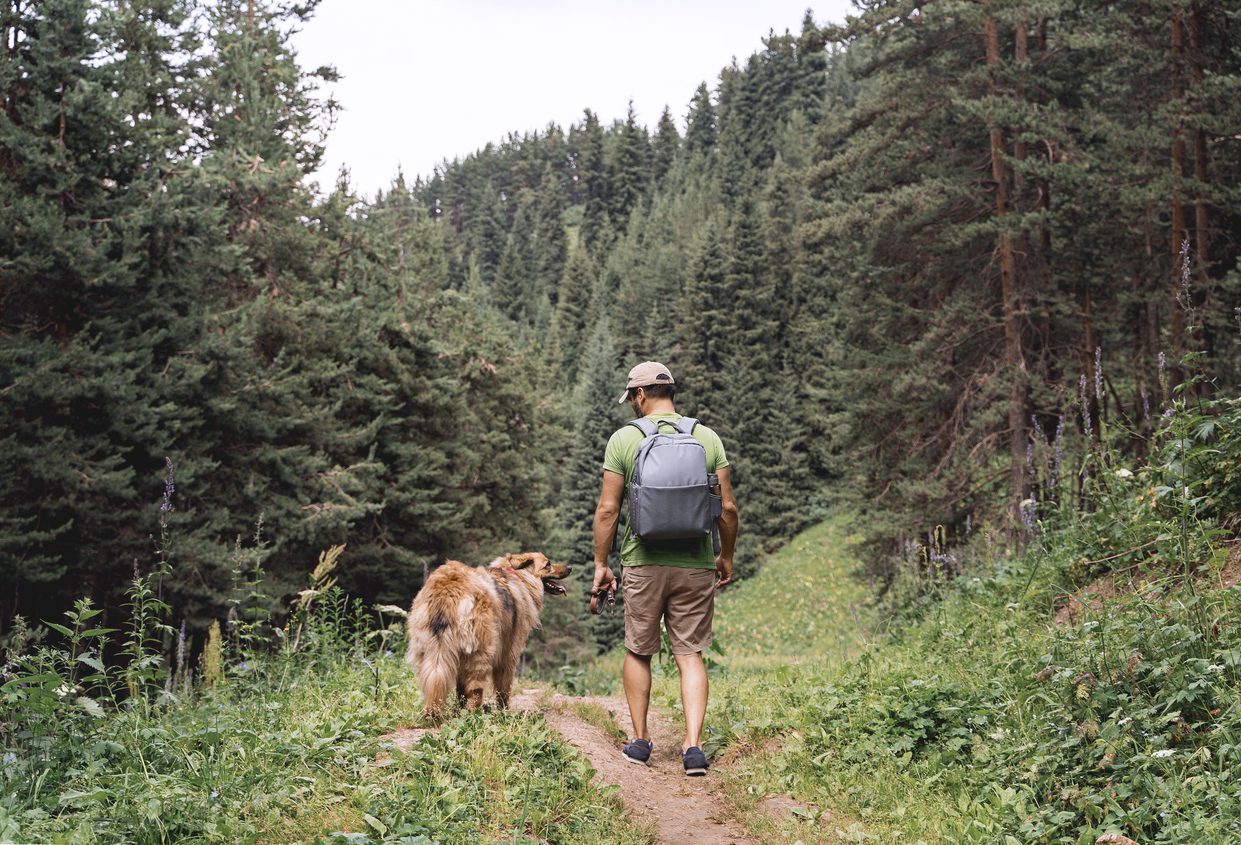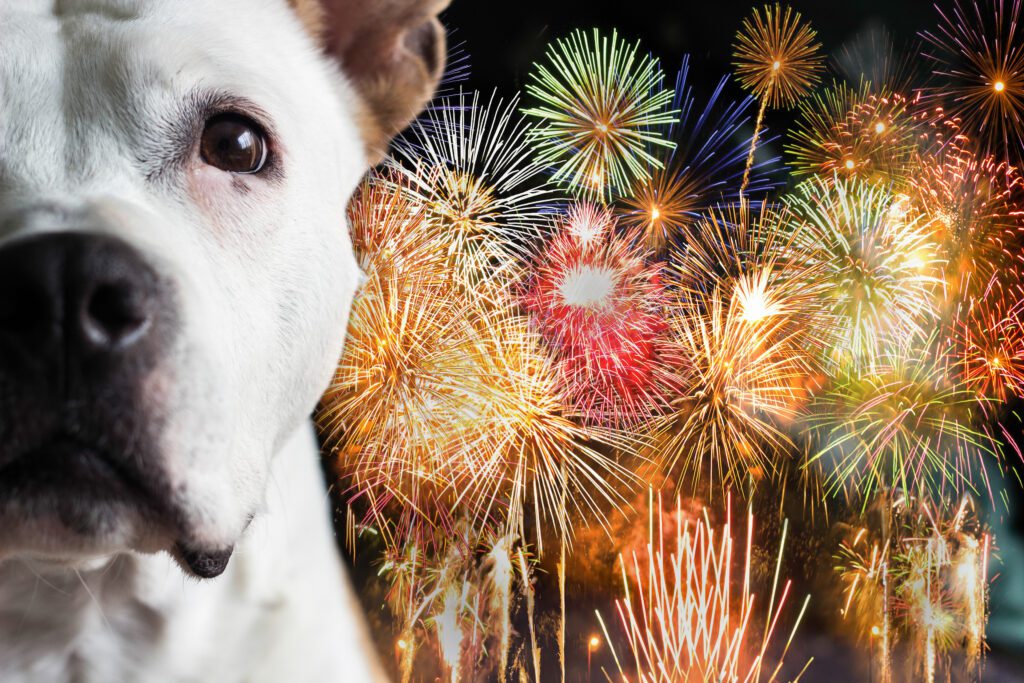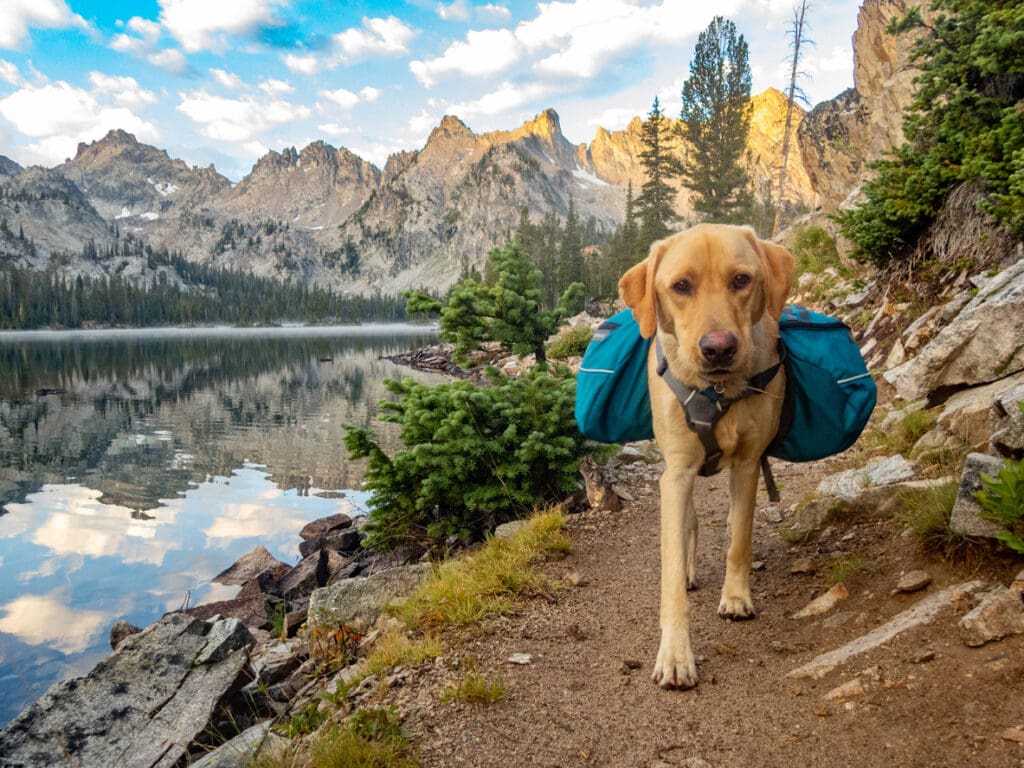Are you a proud pet parent who loves hitting the hiking trails with your furry best friend? Do you wish you could capture those breathtaking moments and stunning landscapes with your canine companion looking just as magnificent? You’re in luck! Taking incredible trail photos of your dog is more achievable than you might think. The hike itself is an essential part of the adventure, offering unique opportunities to capture authentic moments with your dog in beautiful, natural settings. This guide will provide you with crucial dog hiking photography tips and trail photo ideas for dogs to help you elevate your outdoor dog photography game and create lasting memories. Whether you’re an amateur with a smartphone or a seasoned photographer with a full-frame camera, these insights will help you photograph dogs on their adventures.
Why Photograph Your Dog on the Trail?

Beyond simply having a beautiful keepsake, these photographs tell a story. They capture the joy of exploration, the unique bond you share, and the adventurous spirit of your dog. For many pet parents, these aren’t just photographs; they’re snippets of life, destined to become amazing wall art that celebrates their beloved companion. If you’re considering starting a pet photography business, mastering dog photography in natural settings is crucial. Even if you’re just focused on your own dogs, learning to photograph dogs well will bring immense satisfaction.
Essential Gear for Outdoor Dog Photography

You don’t need the best camera or a professional setup to get great photos, but a few basics can make a big difference in the image quality of your dog photography:
- Your Smartphone: Modern smartphones have excellent cameras, especially with good natural light. Learn to use features like portrait mode or burst shot for dynamic action shots.
- A DSLR or Mirrorless Camera (Optional): Consider bringing a versatile lens if you have one. A prime lens like a 50mm offers fantastic sharpness and a shallow depth of field, while a zoom lens (like a 24-70mm) provides flexibility. Telephoto lenses are excellent for dog action photography, allowing you to keep a distance while still getting close-up action shots. Before you start shooting, remember to set your camera’s drive mode, focus mode, and other key settings to match your shooting scenario.
- Treats and Toys are absolutely essential for getting your dog’s eyes to focus on the camera and encouraging them to look in your direction. This makes it much easier to capture the perfect shot.
- Leash (and a Long Line): For safety and control, especially when practicing different poses. A long line can give the illusion of your dog being off-leash in photos while keeping them secure. Always prioritize safety, particularly when hiking near cliffs or busy areas.
- Memory Cards: Make sure you have enough storage. When photographing dogs, especially for dog action photography, you’ll take many photos!
- Weather Protection: For your camera gear and yourself! Rain covers for your camera are a smart investment for any outdoor photography enthusiast.
Understanding Light and Camera Settings for Dog Photography
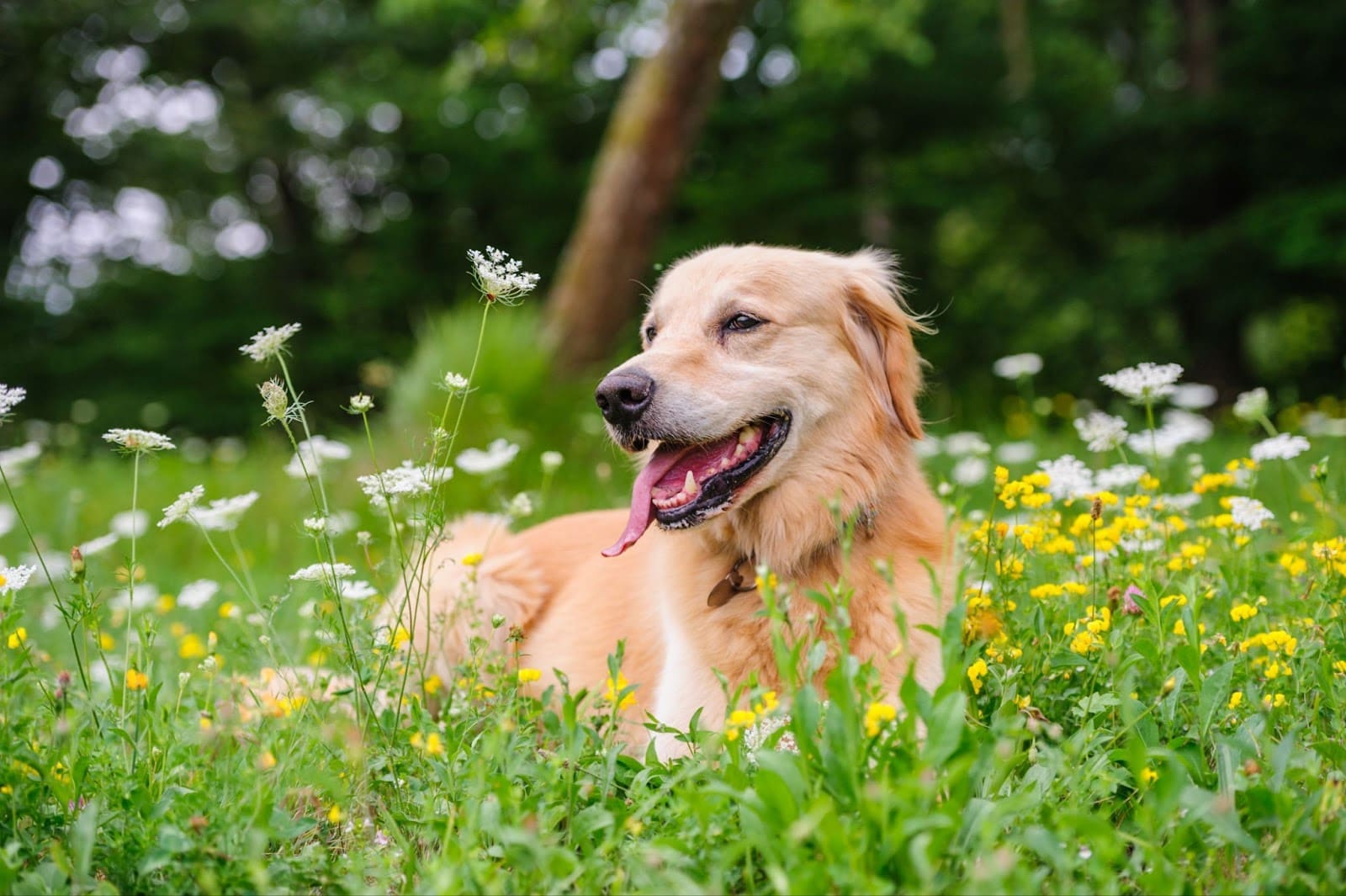
Mastering natural light and your camera settings is key to capturing great dog photos outdoors. Understanding lighting conditions is crucial for adjusting your camera settings and achieving the best results in outdoor dog photography.
Working with Natural Light
Light is the most critical element in photography.
- Golden Hour is Your Best Friend: The hour after sunrise and the hour before sunset offer the softest, most flattering light. This “golden hour” minimizes harsh shadows and creates a warm, inviting glow, perfect for portraits and environmental portraits. It’s ideal for photographing dogs as the soft light is much more forgiving.
- Overcast Days: Don’t dismiss overcast days! The clouds act like a giant softbox, diffusing the light evenly. This provides beautiful, soft illumination without harsh shadows, making it easier to expose your dog correctly and achieve excellent image quality. Adjust your other settings, such as ISO and shutter speed, to suit the current lighting conditions for optimal exposure.
- Avoid Harsh Midday Sun: Direct overhead sun creates strong, unflattering shadows and can make your dog squint. If you must shoot during these hours, look for a large shaded area or position your dog with their back to the sun for rim light, though be careful not to blow out the highlights.
Essential Camera Settings
Understanding your camera settings will give you creative control over your dog photography.
- Shutter Speed: This is crucial for dog action photography. You’ll need a fast shutter speed for a running dog to freeze the motion and avoid blur. A general rule of thumb for dog running is 1/1000th of a second or faster. For a stationary dog, you can go as low as 1/250th, but always be mindful of potential camera shake. The correct shutter speed depends on the speed of your dog and the amount of light. When photographing moving subjects, a faster shutter speed is always better.
- Aperture (f-stop): This controls the depth of field – how much of your image is in focus. For stunning portraits with a blurred background (bokeh), use a wide open aperture (e.g., f/1.8 to f/2.8). Using wide apertures (such as f/2.8 to f/4) helps create strong subject isolation and beautiful background blur, making your dog stand out. For environmental portraits where you want more of the landscape in focus, use a narrower aperture (e.g., f/5.6 or higher).
- ISO: This controls your camera’s sensitivity to light. Keep your ISO as low as possible (e.g., 100-400) for the best image quality and to minimize noise, especially with a full-frame camera. Only increase it if necessary to achieve a faster shutter speed or correct exposure.
- Focusing Modes: For dog action photography, use continuous autofocus (AI Servo on Canon, AF-C on Nikon/Sony) to track your moving dog. For stationary portraits, single-shot autofocus works well. Always try to focus on your dog's eyes to ensure they are tack-sharp and full of life.
Adjusting the aperture is often the last thing you do after setting your primary camera settings, allowing you to fine-tune the image for your desired style and focus accuracy.
Top Tips for How to Photograph Dogs on Trails

Ready to start snapping? Here are our best outdoor dog photography guide tips to help you capture those stunning shots:
- Prioritize Your Dog’s Comfort and Safety: This is paramount. Never put your dog in a dangerous situation for a photo. Ensure they are comfortable, hydrated, and happy throughout the photoshoot. Always be aware of your surroundings, especially in local mountains or unfamiliar terrain.
- Get Down to Their Level: One of the most impactful dog hiking photography tips is to get low! Shoot from your dog’s eye level to create a more intimate and engaging perspective. This helps tell their story from their point of view and makes for powerful portraits.
- Focus on the Eyes: Your dog’s eyes are incredibly expressive. Ensure they are sharp and in focus to draw the viewer in. A sharp focus on the dog’s eyes can make or break a great photo.
- Utilize Burst Mode for Action: As mentioned, dogs are constantly moving! Burst mode allows you to take a rapid sequence of photos, significantly increasing your chances of getting that perfect, in-focus action shot of your dog running or playing.
- Capture Action and Candid Moments: While posed shots are great, don’t forget to capture your dog in their natural element – running, sniffing, playing, and exploring. These candid moments often make for the most authentic and heartwarming candid shots and excellent dog action photography.
- Incorporate the Landscape with Your Lens Focal Length: Remember, you’re on a trail! Use the stunning natural surroundings as a backdrop. To frame your dog, consider leading lines from paths, towering trees, or scenic overlooks. Your lens focal length will determine how much of the background is included. A wider focal length (e.g., 24mm on a full-frame camera) is excellent for showing more of the environment, creating beautiful environmental portraits. Longer focal lengths (e.g., 85mm or telephoto lenses like 70-200mm) will compress the background and help isolate your dog, creating beautiful bokeh.
- Use Treats and Sounds to Get Attention: Squeaky toys, treats, or even just calling their name can help direct your dog’s gaze towards the camera. Be patient and make it a fun experience for them.
- Look for Interesting Textures and Colors: The natural world has incredible visual elements. Position your dog near mossy rocks, vibrant wildflowers, or fallen leaves to add depth and interest to your photos.
- Post-Processing Can Enhance Your Photos: A little post-processing can go a long way. Adjusting exposure, contrast, and color balance can make your photos pop and really bring out the details. Many free and paid apps offer great editing tools. Even minor adjustments can significantly improve the final image. Careful attention to each step, from shooting to editing, ensures the best possible result in your dog hiking photographs.
Capturing Candid Moments on the Trail
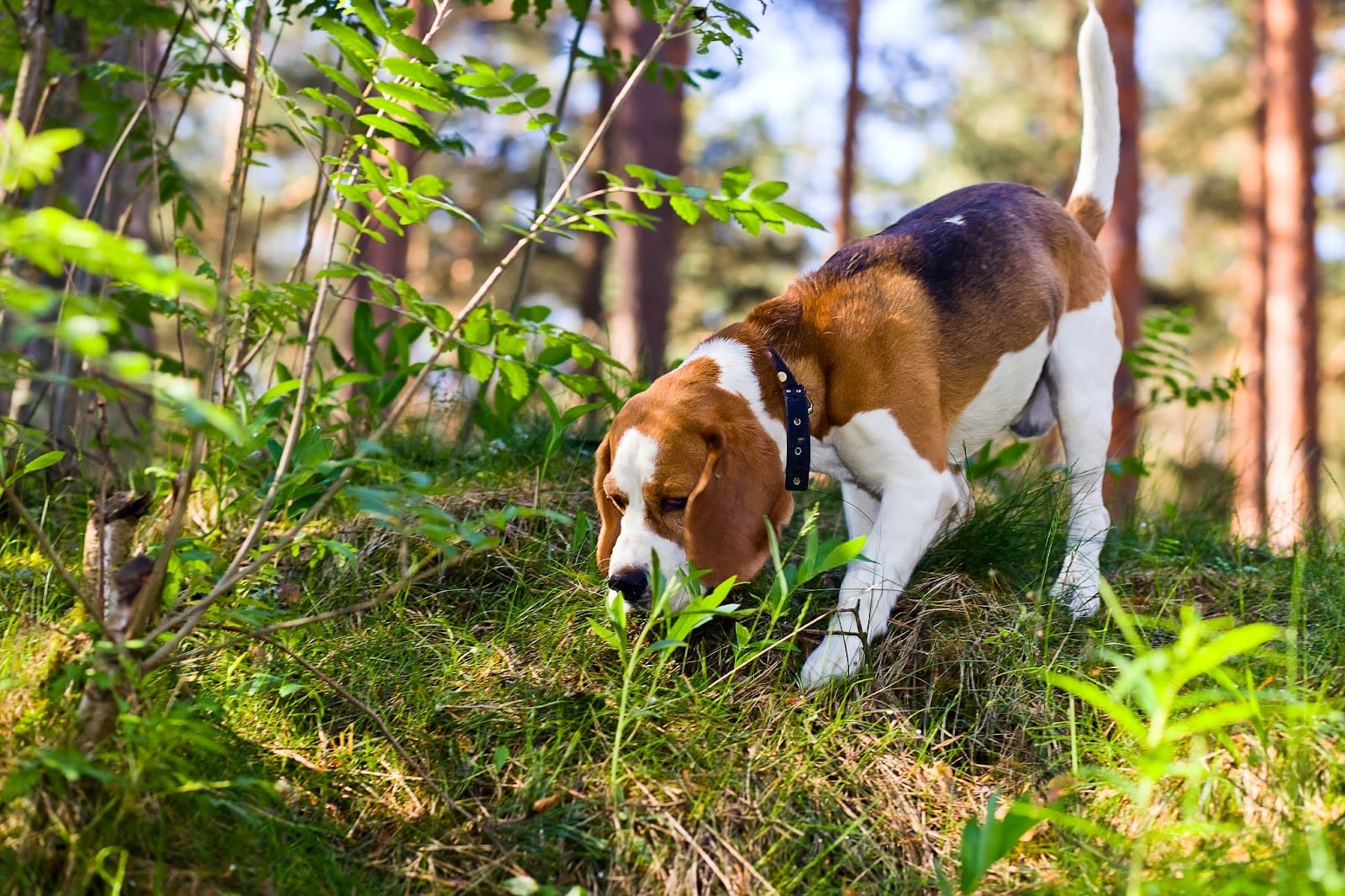
Capturing candid moments on the trail is one of the most rewarding aspects of dog photography. These unposed, genuine interactions between dogs and their owners often result in the most memorable and heartwarming images. To truly capture the spirit of your dog, try to blend into the background and let the adventure unfold naturally. Using a telephoto lens with a longer focal length, such as a 70-200mm, allows you to photograph candid shots from a distance without interrupting the moment. This approach helps you capture those spontaneous bursts of joy, curiosity, or playfulness that make for amazing wall art.
Pay close attention to your dog’s body language—anticipating when they’re about to leap over a log, chase a scent, or share a loving glance with you. Setting your camera to a fast shutter speed, like 1/1000 sec or higher, ensures you freeze the action and keep your images sharp, even during the most energetic moments. Shooting in continuous mode (burst mode) increases your chances of nailing that perfect shot, especially when your dog is on the move. By combining these techniques, you’ll be able to capture candid moments that tell a story and create images that truly celebrate the bond you share with your dog—perfect for turning into stunning wall art for your home.
Trail Photo Ideas for Dogs to Get You Started

Now that you have the tips, let’s explore some specific ideas for capturing great dog photos outdoors:
- The “Look Back” Shot: Have your dog walk a short distance ahead, then call their name. As they turn to look at you, snap the photo! This often yields a charming candid moment.
- Summit Superstar: If you reach a scenic overlook or peak, pose your dog looking out at the view. This makes for fantastic wall art that commemorates your adventure.
- Trail Blazer: Capture your dog walking along the path, showcasing the trail winding behind them. This is an excellent example of how to combine landscape and dog photography.
- Reflection Perfection: If you encounter a calm body of water, try to capture your dog’s reflection. This adds an artistic element to your image.
- The Happy Sniffer: Get a close-up of your dog happily sniffing something on the trail, showing their curious nature. This type of portrait highlights their personality.
- Action Paws: Try to capture your dog mid-air during a jump or mid-stride while dog is running. This requires a fast shutter speed and good timing!
- “Waiting for Me” Shot: Have your dog sit patiently on a rock or log, looking like they’re waiting for you. This creates a thoughtful portrait.
- Playtime Fun: Don’t forget to shoot photos of your dog playing with a favorite toy or interacting with you. These are priceless candid shots.
- Silhouettes at Sunset: Position your dog against a beautiful sunset for a striking silhouette. This is an excellent way to utilize the golden hour and create dramatic portraits.
- Explore Different Angles: Don’t just shoot at eye level. Try shooting from above, looking down on your dog, or from a very low point of view to make them appear majestic.
For even more inspiration and to master advanced techniques, consider enrolling in a dog photography course. A structured course can help you develop your skills and discover new creative ideas for capturing unique trail photos.
Safety Precautions and Tips for Trail Dog Photography
Safety is the foundation of every successful trail dog photography session. Before you even start shooting, make sure you have permission to photograph in your chosen location and that you’re following all local rules—especially in protected areas like national parks or wildlife reserves. Always keep your dog’s safety and comfort at the forefront. Be mindful of potential hazards such as steep drop-offs, fast-moving streams, or encounters with wildlife. Never encourage risky behavior or use bait that could put your dog or local animals in danger.
It’s also important to be prepared for changing weather conditions. Pack extra water, a first aid kit, and protective gear for both you and your dog. If you’re shooting in an area with lots of distractions or possible dangers, keep your dog on a leash or long line for added security. When composing your shots, using a wide aperture (like f/2.8) can help create a shallow depth of field, making your dog stand out from the background while keeping the focus on their features. By prioritizing safety and using thoughtful photography techniques, you’ll ensure that every adventure is enjoyable and productive, resulting in beautiful images highlighting your dog’s personality without compromising their well-being.
Editing and Post-Processing Your Trail Dog Photos
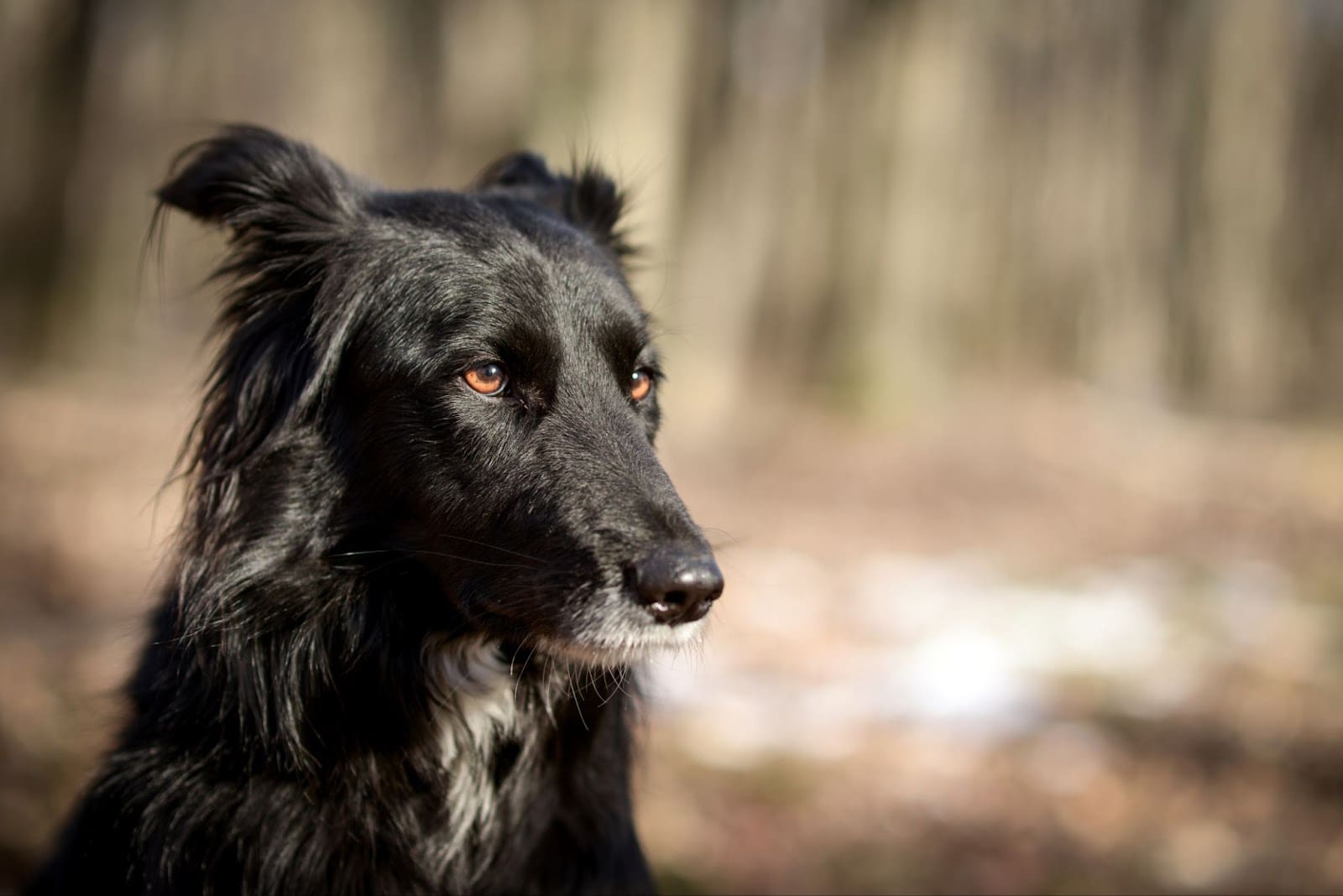
Once you’ve captured your favorite moments on the trail, editing and post-processing can elevate your dog photography from good to truly amazing wall art. Start by importing your photos into editing software like Lightroom or Photoshop, where you can fine-tune exposure, contrast, and color balance to bring out the scene's natural beauty. Aim for a look that enhances the moment without making it feel artificial—subtle adjustments often have the most significant impact.
Pay special attention to your dog’s eyes, as they are the focal point of most dog portraits. Use tools like the adjustment brush or spot removal to brighten and sharpen the eyes, making them pop in the final image. If your photo includes a dramatic sky or a bright background, try using a gradient filter to balance the exposure and keep the focus on your dog. Don’t be afraid to crop or straighten your images to improve composition and draw attention to essential elements. With thoughtful post-processing, you can transform your trail dog photos into stunning images that are ready to be displayed as wall art, capturing the spirit and adventure of your outdoor experiences.
Sharing and Displaying Your Best Dog Trail Photos
After you’ve created a collection of beautiful dog trail photos, sharing and displaying your work is a fantastic way to connect with fellow dog lovers and showcase your photography skills. Social media platforms like Instagram and Facebook are perfect for sharing your latest shots—use hashtags such as #dogphotography or #traildogphotography to reach a wider audience and engage with pet parents who appreciate great dog photography. Consider starting a dedicated website or blog to build your portfolio and tell the stories behind your favorite images.
When it comes to displaying your photos, think beyond the digital world. High-quality prints, canvas wraps, or even metal prints can turn your best shots into amazing wall art for your home or office. For example, a large portrait of your dog running through a sunlit forest can become a striking centerpiece, while a candid moment captured on the trail can add warmth and personality to any space. By sharing and displaying your dog photography, you celebrate your own adventures and inspire others to appreciate the beauty and joy of photographing dogs in the great outdoors.
Staying Inspired and Motivated as a Dog Trail Photographer
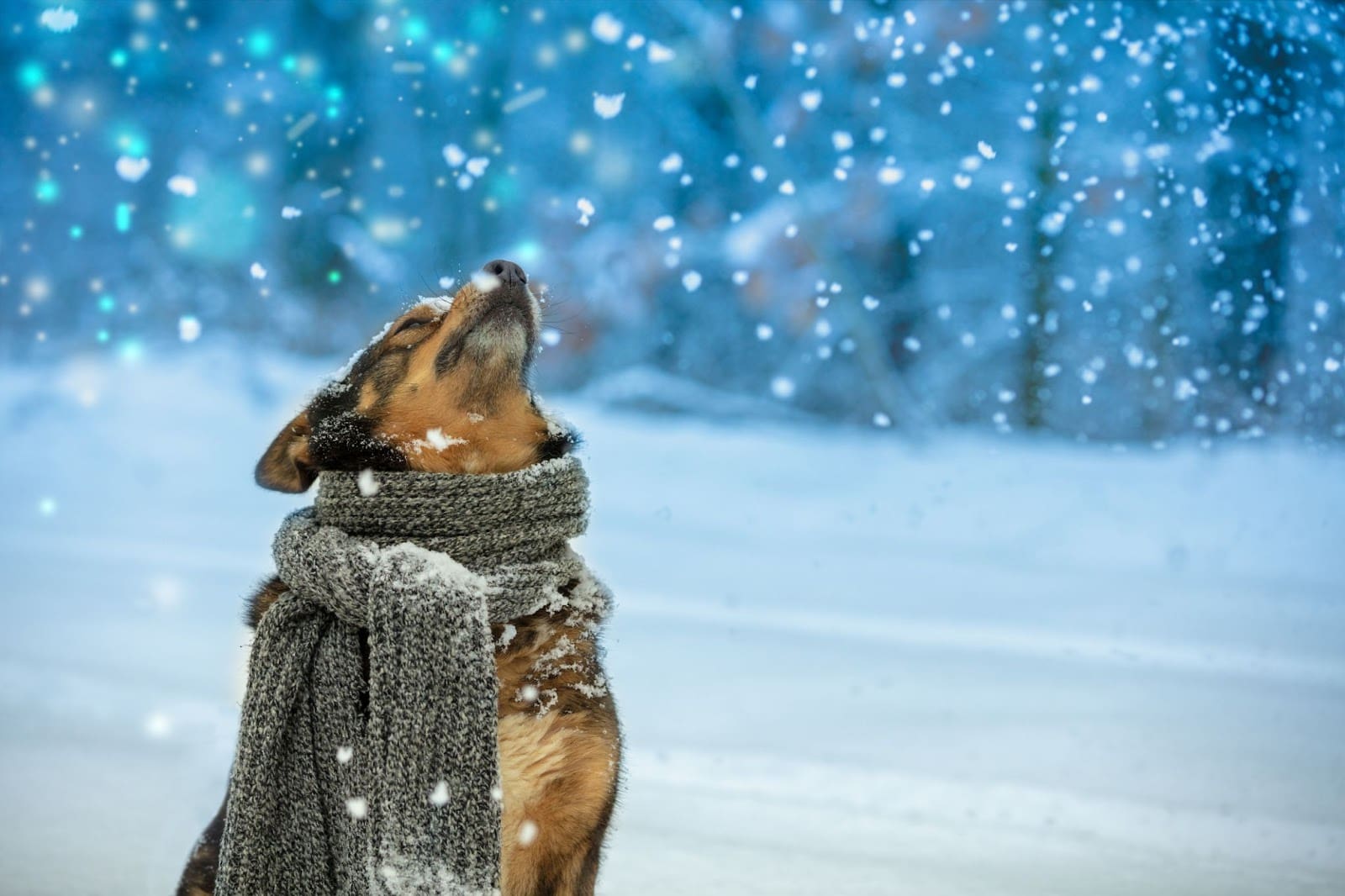
Keeping your passion for dog trail photography alive means finding new ways to stay inspired and motivated. Challenge yourself by experimenting with different camera settings, trying out new locations, or setting creative goals—like capturing a certain number of candid moments each month or shooting during different seasons. Draw inspiration from other photographers by attending workshops, joining online communities, or following your favorite artists on social media.
Remember why you started photographing dogs in the first place—whether it’s the thrill of capturing candid moments, the joy of creating amazing wall art, or the satisfaction of sharing your work with pet parents around the world. Celebrate your progress by printing your favorite images or setting up a gallery wall at home. Each new shoot is an opportunity to learn, grow, and capture the unique bond between dogs and their humans. By staying curious and passionate, you’ll continue to create photos that document your adventures and bring happiness to others who love dogs as much as you do.
Beyond Your Own Dogs: Pet Photography Business Opportunities
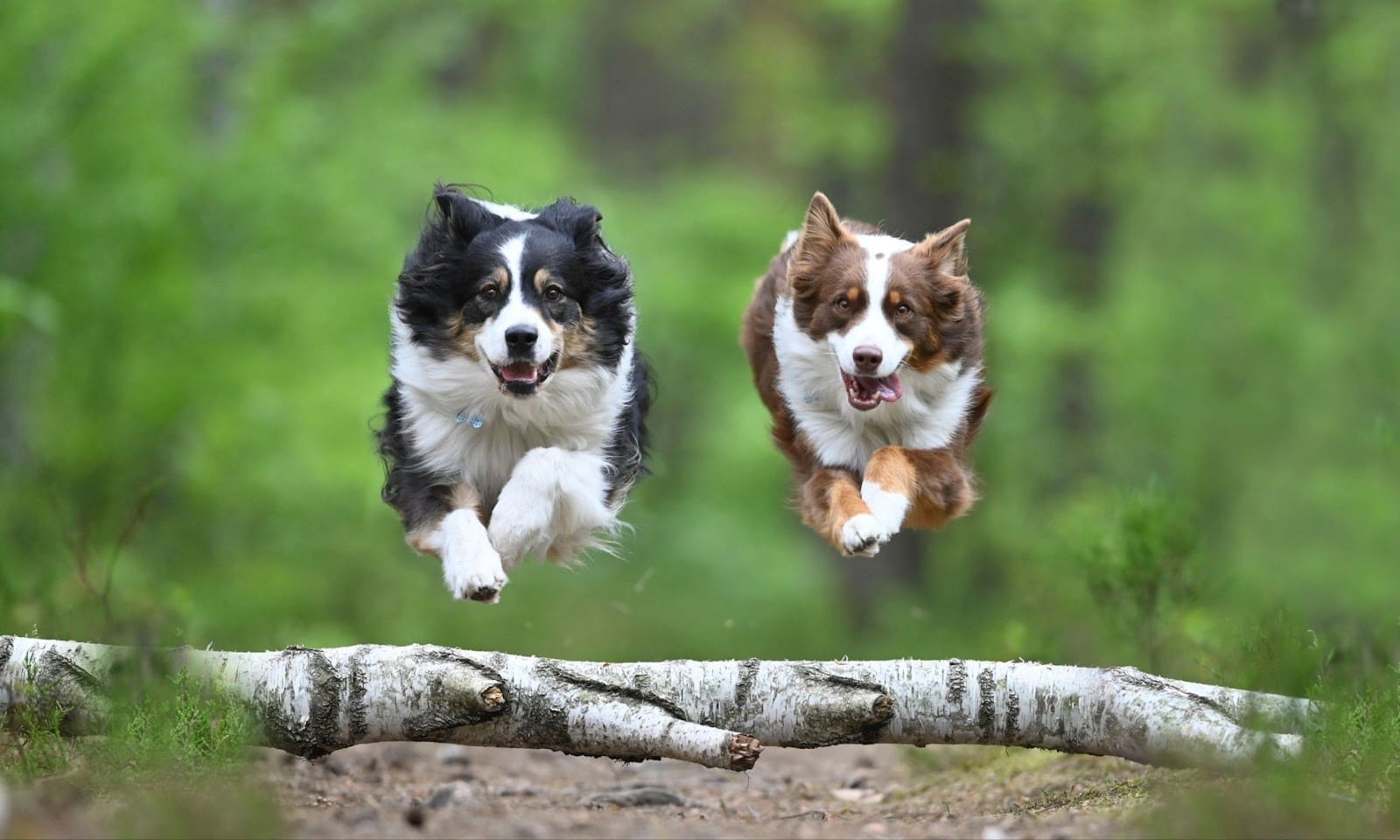
If you truly enjoy photographing dogs and feel you have a knack for it, you might consider turning your passion into a pet photography business. Many pet parents are looking for skilled photographers to capture professional portraits of their beloved companions, whether it's their own dogs or even their cats! Mastering outdoor photography and learning to work with clients dogs in various conditions can open up new opportunities.
Gear Up for Your Next Adventure with K9 Conquest!
Now that you're armed with these extensive how to photograph dogs on trails tips, it's time to hit the trails! And to make sure your dog is ready for every adventure, explore K9 Conquest's range of high-quality gear. From durable leashes and comfortable harnesses to travel bowls and protective booties, we have everything you need to keep your canine companion safe, happy, and stylish on all your outdoor excursions. Remember, the best photo begins with a happy and well-equipped dog.
Happy trails and happy snapping! We can't wait to see your amazing wall art featuring your adventurous dog. Share your incredible dog photos with us on social media using #K9ConquestAdventures! What’s your favorite type of photo to capture of your dog on the trail?
FAQs
- Do I need a professional camera to take great trail photos of my dog?
Not at all! While DSLRs or mirrorless cameras offer more control, most modern smartphones are fully capable of capturing stunning trail photos—especially in good lighting. Mastering composition, natural light, and timing matters more than expensive gear. - What’s the best time of day to photograph my dog on a hike?
Aim for golden hour—either shortly after sunrise or just before sunset. The soft, warm lighting during these times helps reduce harsh shadows and brings out natural colors, making your dog and the landscape look their best. - How do I get my dog to look at the camera?
Use treats, toys, or sounds (like a squeaker or clicking your tongue) to get your dog’s attention. Keep sessions short and fun so your dog stays engaged and doesn’t get frustrated or tired. - What camera settings should I use for capturing action shots of my dog?
For dogs in motion, use a fast shutter speed—around 1/1000 sec or faster—to freeze the action. Set your camera to burst mode and continuous autofocus (AF-C or AI Servo) to help track movement and improve your chances of getting a sharp shot. - Is it safe to photograph my dog off-leash on the trail?
Only if it’s legal and your dog has excellent recall. For most photos, a long training leash can give the illusion of off-leash freedom while keeping your dog safe. Always prioritize safety over getting the shot.

